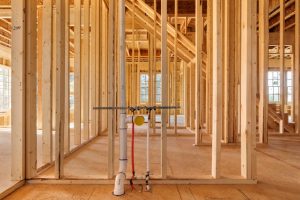While restrictions during the pandemic contributed to cleaner air around the world, there is still much that must concern us. Toxic environments still exist, not only outdoors but also indoors.
According to the World Health Organization (WHO), 3.8 million people around the world die every year because of indoor air pollution. It is necessary to ensure that the condition of household environments improves from current levels.
Carbon Monoxide Pollution at Home
There are many causes of indoor household air pollution, mostly preventable. For instance, cigarette smoking and burning charcoal produce poisonous carbon monoxide gas. Running a car or using a petrol-powered generator in a closed garage will cause a build-up of carbon monoxide. Certain cleaning fluids and paint removers have methylene chloride or dichloromethane that the body breaks down into carbon monoxide. It is important to check the labels of products used in the home.
Many possible sources of carbon monoxide poisoning are commonplace and often ignored. Home appliances such as boilers, central heating systems, gas stoves, and water heaters that burn natural gas, liquefied petroleum gas (LPG), oil, coal, or wood can also produce deadly carbon monoxide if the fuel is incompletely burned. This happens when blocked vents, flues, or chimneys cannot expel gases, or if the appliance is incorrectly installed or not properly maintained or repaired.
Household Air Pollution Prevention
To prevent the occurrence of harmful gas leaks, it is necessary to ensure proper installation and maintenance of appliances by a registered engineer. For instance, have an annual boiler service that includes a full inspection, testing, and any needed repairs of the entire system. Do the same for all other appliances in the household.
In the UK, for gas appliances, ensure that you hire a service registered with the Gas Safe Register. For solid fuel appliances, look for one registered with the Heating Equipment Testing and Approval Scheme (HETAS). For oil appliances, ensure that the service has certification from the Oil Firing Technical Association (OFTEC).
Carbon monoxide is stealthy because it has no smell or taste. Possible signs in the household are yellow or orange flame instead of blue on the gas stove, soot stains on gas appliances, erratic pilot lights, and an increase in window condensation. To catch the presence of carbon monoxide instantly, it is important to have a loud carbon monoxide alarm installed in every household that can alert occupants and even wake them up at night.
What to Do When There Is a Leak

Upon detection of a leak, residents must turn off all appliances, open all doors and windows for ventilation, and leave the house at once. In the UK, they must immediately report the situation to the Health and Safety Executive (HSE) Gas Safety Advice Line.
They must not return to the house until after an inspection by a registered engineer clears it. Instead, they must seek immediate medical assistance.
Health Impact of Carbon Monoxide Poisoning
Carbon monoxide enters the bloodstream when breathed in. It mixes with hemoglobin in red blood cells and forms carboxyhemoglobin, preventing blood from carrying oxygen around the body. Tissues and cells then start to die because of a lack of oxygen.
Symptoms of low-level carbon monoxide exposure and poisoning include dizziness, nausea, vomiting, exhaustion, confusion, stomach pain, and shortness of breath. Prolonged exposure up to two hours can cause neurological symptoms like having difficulty thinking and concentrating, emotional changes, irritation, depression, impulsiveness, and irrationality.
High-level exposure and severe carbon monoxide poisoning can result in intoxication exhibited as a compromised mental state with personality changes, vertigo, a heart rate over 100 beats per minute causing breathlessness, damage to the brain and nervous system causing loss of physical coordination, seizures caused by uncontrollable electrical activity in the brain, loss of consciousness, and a heart attack. Extremely high levels of carbon monoxide in the body can lead to immediate death.
Among those who survive severe carbon monoxide poisoning, some 10 to 15 percent have long-term complications. These include heart disease and brain damage with possible vision loss, hearing loss, and the development of Parkinson’s disease. In pregnant women, it causes a high risk of stillbirth, low birth weight, or behavioral problems in the child.
Importance of Vigilance
It is difficult to identify carbon monoxide poisoning if the persons affected are not aware of their exposure to the gas. This is because many of the symptoms are like those of other conditions. Once poisoned persons leave the area with the gas, the clear indicators of carbon monoxide poisoning disappear from their blood after a short period. While these are no longer detectable in tests, the ill effects on their health can remain for many years.
It is, therefore, crucial to be vigilant against carbon monoxide poisoning in households. While outdoor pollution is something that mainly governments can control, the indoor environment is in the hands of residents.






